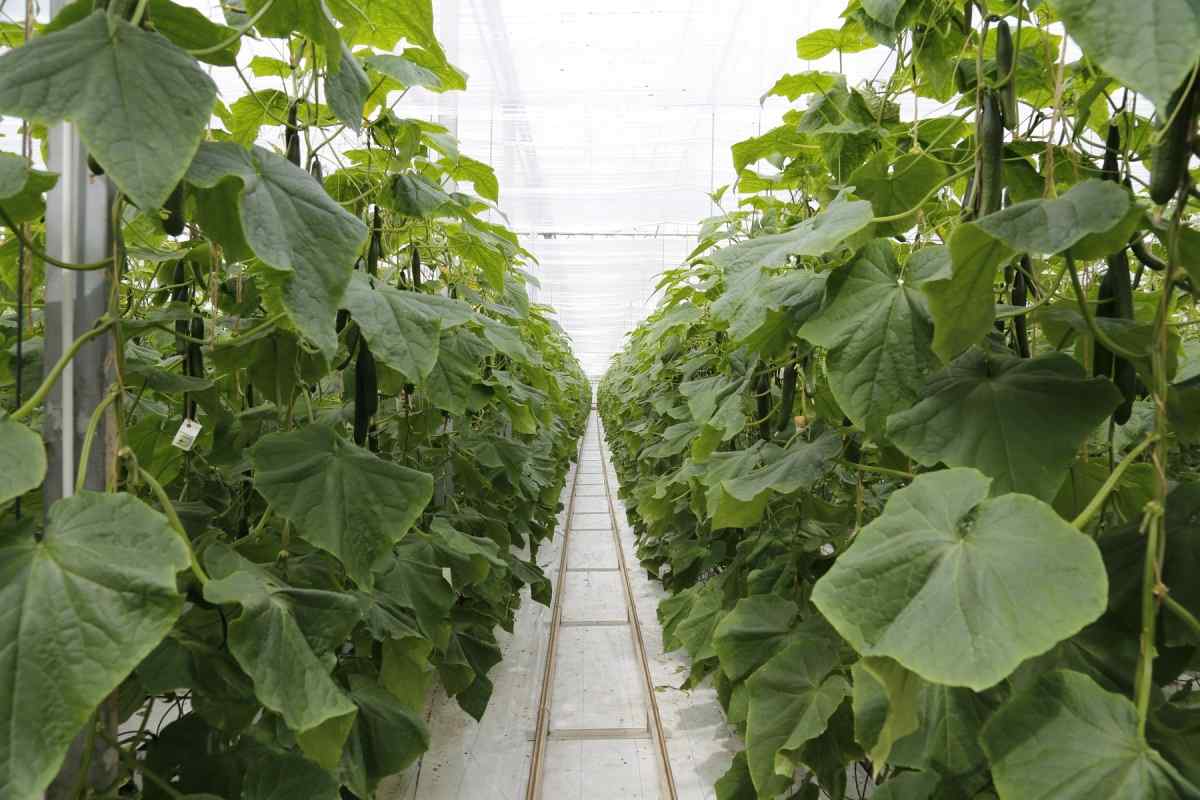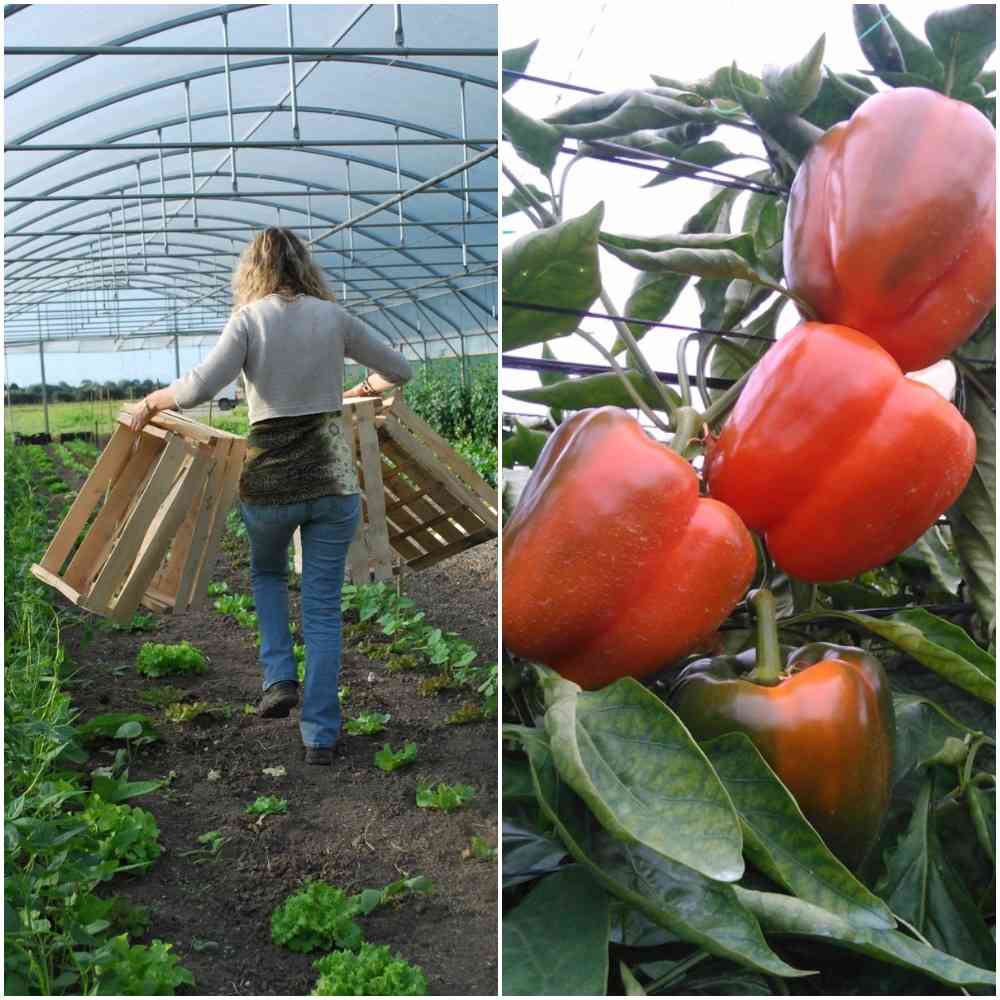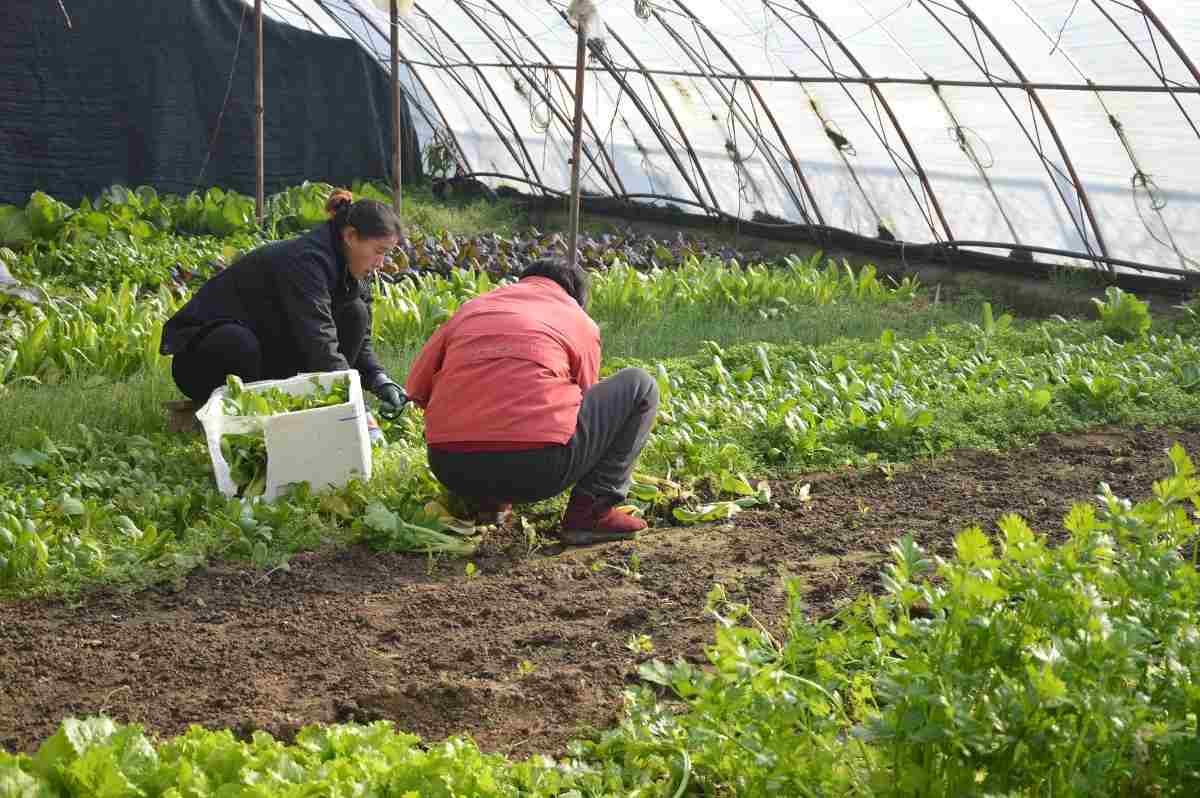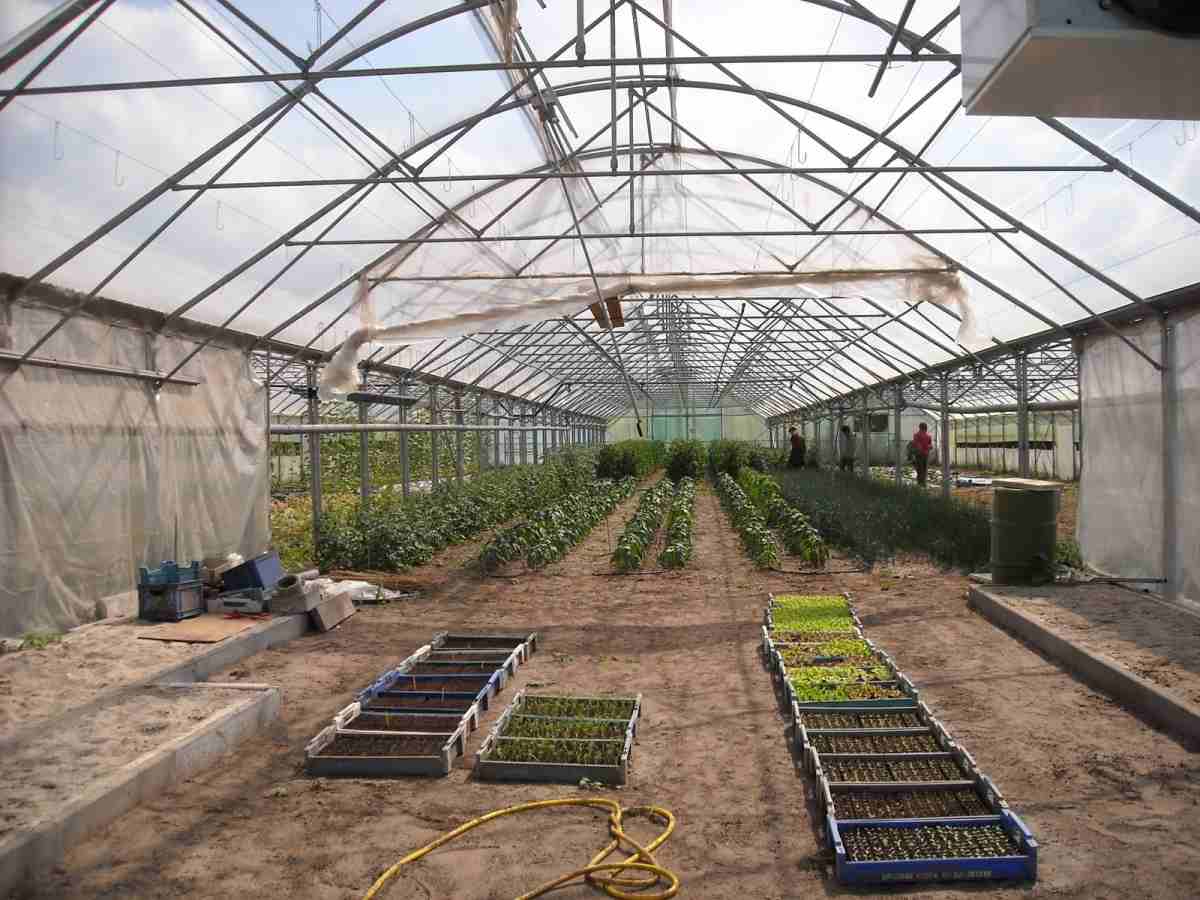Introduction to vegetable Farming in Greenhouse
Greenhouse vegetable plants are healthy, nutritious, and delectable. Properly done, your greenhouse vegetable garden must flourish in all weather conditions, without being negatively affected by changes in the seasons. A greenhouse controls the temperature level, water, humidity, and light. The kind of vegetable garden to grow in the greenhouse depends on the structure’s temperature and location. Choosing the right kinds of vegetables to grow in the greenhouse is very important for the garden’s overall success. Greenhouse farming is the process of cultivating vegetable plants in a greenhouse ecosystem environment. Vegetable cultivation in greenhouses is a practice that has allowed farmers to increase their performance, while improving the quality of products, isolating them in micro-ecosystems that have the ideal conditions for plants to grow healthy, strong and beautiful. In this article we also discuss below topics;
- Can you grow vegetable plants year-round in a greenhouse
- Is greenhouse farming profitable in India
- What are the best vegetables to grow in a greenhouse structure
- What is the most profitable greenhouse crop
- Do greenhouses need ventilation
- What temperature should a greenhouse be
A step by step guide to vegetable farming in greenhouse
Growing vegetable plants outdoors has a lot of differences from raising crops in a greenhouse. The main difference is that indoors, you control all the variables such as light, water, temperature, humidity, and soil nutrients. Aside from having a controlled environment, where the temperature settings can be adjusted accordingly, humidity and moisture are well regulated. It gives the plant a constant supply of moisture both from the environment and the plant roots which reduces water stress.
To grow vegetables year-round in a greenhouse structure, you’ll need to adjust your lighting, temperature, watering, and what types of vegetables you grow. Though, you’ll need to adjust your greenhouse conditions depending on the time of year, how much sun greenhouse gets, your growing zone, and what vegetable varieties you want to grow.

A greenhouse is a great asset when growing vegetables in the garden, extending your growing season and even providing you with fresh vegetables through the winter and early spring. Successful greenhouse vegetable gardening needs the right environment, taking into consideration heat (in cooler months), cooling (in warm months), ventilation, air circulation, shading, humidity, and lighting.
Location of the greenhouse for vegetable farming
The ideal location for a greenhouse system has high winter light intensity, moderate winter temperatures, low humidity, and easy access to markets. The easy availability of existing utilities will help reduce establishment costs and then will affect ongoing fuel costs. Avoid trees or buildings that can shade the greenhouse, although windbreaks will help reduce heating costs if properly located. Be sure to leave sufficient room for future expansion. Highways have made transporting greenhouse-grown vegetables easier, locating greenhouse-grown vegetables near large population areas is very important. For example, high-quality tomatoes must be vine-ripened; ripe tomatoes are hard to transport, so the closer they are to the retail market the better. Greenhouse vegetable farming is the type of farming in which vegetable crops are grown in built structures like wood, plastic, metal, and net.
Why consider Greenhouse Vegetable Farming?
- Greenhouse requires a small land area for production.
- A greenhouse structure protects the crops against adverse weather, pests, and diseases.
- There are easy temperature control and practice of IPM ideal for vegetable production.
- A greenhouse ensures higher crop yields and improved quality of vegetables.
- There is an efficient use of resources like water and nutrients.
- The greenhouse farming can last longer and it is highly profitable.
- The crop yield maybe 10 to 12 times higher than that of outdoor cultivation depending upon the type of greenhouse, crop type, and environmental control facilities.
- Reliability of crop increases under greenhouse farming.
- Ideally suited for vegetable crops.
- Off-season production of vegetable crops.
- Disease-free and genetically superior transplants can be formed continuously.
- Efficient utilization of chemicals, and pesticides to control pests and diseases.
- Water requirement of crops limited and easy to control.
Where to build your greenhouse for vegetable farming
Once you have purchased a greenhouse, the next thing you need to think about is where you are going to build it. Ideally, you want a spot that has maximum sun exposure but sheltered from cold winds. Another thing to take into consideration is having very easy access to water and electricity.
Suitability of greenhouse vegetable farming
Greenhouses are suited for growing vegetable plants in the following ways;
- Starting hardy vegetable plants early
- Growing tender crops such as tomatoes, chilies, peppers, cucumbers, and aubergines through summer months
- Trying such exotic and heat-loving plants such as sweet potatoes, melons, and okra
Vegetables to grow in the winter in greenhouse
Vegetables best for greenhouse vegetable gardening in the winter season include lettuce, spinach, radishes, tomatoes, peppers, and cucumbers. Though, what you can successfully grow depends on the night time temperatures you decide to keep. A cool greenhouse, with a nighttime temperature range of 4-7°C, works for lettuce, spinach, and radishes. Peppers, tomatoes, and cucumbers need warmer temperatures at night, around 18°C, particularly when the fruit is growing.
Best to use your greenhouse to grow vegetables
In case if you miss this: Method of Organic Farming.

Types of vegetables grown in a greenhouse include cucumbers, sweet pepper, lettuce, and tomatoes. These vegetable plants are the most profitable due to its high consumption in the country.
1. Winter to spring
When possible, ensure that you sow your hardy plants like peas, onions, lettuce, fresh leeks, celeriac, cabbage, and Brussels sprouts in winter through to early spring. You can transplant them outside once the weather warms up. If you live in a desert climate you will want to ensure that your greenhouse has proper ventilation to ensure your plants do not overheat.
2. Mid-Spring
In mid-spring, sow fast-growing vegetable plants. The best options include sweet corn, melons, French beans, cucumbers, pumpkins, and squashes. This way, crops will be ready for planting under glass towards the end of spring or outside once summer rolls around. Consider the following tips for growing in mid-spring;
- If greenhouse vegetable garden is unheated, get ready-grown tomato and pepper plants
- Sow basil during this season and you can move the plants outside or indoors in summer
- Plant the greenhouse vegetables into their last position in the summer season
3. Mid-summer
To ensure everything goes well, do the following;
- Get rid of all spent plants and replace them later with sown vegetable plants
- Sow your parsley, French beans, and Calabrese outside
Spacing between rows and plants in the greenhouse
It is very important because parameters, such as light, air circulation, and performing day to day tasks, can be compromised. In greenhouse farming, every space has to be maximized; so, it is imperative to consider plant needs for optimum growth and development while at the same time maximizing resources. For example, tomatoes are grown in rows that are about 6 feet apart, each row has two plants and they are 2 feet apart. In each row, there is a drip system that waters and then feeds each plant. And, excess water is collected in a trough runs along the length of each row. Let’s supposed the grower decides to grow lettuce. The changing the greenhouse layout for growing lettuce plant will be time-consuming, expensive and some of the volumes of the greenhouse will be unused.
Temperature management in greenhouse vegetable farming
High or low-temperature levels have negative effects on plant growth and development. Pest pressure increases as temperature increases and the greenhouse can be considered a solar energy collector. Solar radiation is reflected, absorbed, and transferred. All physical components making up the greenhouse system are affected by these three parameters, but in different proportions depending on the heat transfer coefficient and color of the physical component. For example, steel from the structure is heated by solar energy during the day and then it releases the heat at night.
During the summer season, shade cloths are used to reduce heat load and air temperature, but it has negative effects since it reduces irradiance (or light levels) for the crop. The shade cloth subdivides the volume of air inside the greenhouse into two separate microclimates below and above the shade cloth. Also, the “buffer” volume of air is reduced resulting in low cooling efficiency. Another method to reduce the temperature is by applying a shading compound on the glazing. This process is more efficient because the compound is applied to the outside of the glazing, light is diffused more efficiently through the greenhouse and the volume air inside the greenhouse is not compromised.
Growing vegetables in the greenhouse
Choose the vegetable plants you want to grow based on the temperature of the greenhouse. Choose what kinds of vegetables to grow in the greenhouse. Arrange the vegetable plants so that the tallest ones sit on shelves in the back of the greenhouse; leave ample space between crops. Water the plants when needed because this is an indoor garden; crops will not benefit from rainfall. If the greenhouse gets too hot inside, open a window to help regulate the temperature by letting some cool air inside. Insulate windows and doors if the greenhouse system is losing heat.
You should not miss this: Tilapia Fish Farming in Aquaponics.

Watch out for fungal and other diseases that can grow on the vegetable plants. Bugs get into greenhouses and consult your local garden store or extension service on the types of insect repellents, fungal cleaners, and fertilizers to use. Because fungi spread, you could need to separate or destroy diseased plants.
Best vegetables to grow in a greenhouse;
Knowing what you are going to grow is one of the first steps to getting started in the greenhouse. Before you select the plants and crops you want to grow, research what environments, temperatures, and humidity your plants and crops will need to thrive.
Listed a few easy to grow vegetables to help get you started;
- Salad leaves
- Spring onions and radishes
- Potatoes
- Peas
- Herbs
- Broad beans
- Runner beans
- Onions and garlic
- Tomatoes
- Beetroot
- Squash
- Broccoli
- Leafy greens – spinach, kale, arugula, and microgreens
Warm-season crops
- Eggplant
- Cantaloupe
- Beans
- Cucumber
- Summer squash
Below are some examples of different vegetables that grow best during each season:
Best vegetables to grow based on season;
Winter – Brussels sprouts, carrots, cabbage, potatoes, winter squash
Spring – Spinach, radishes, broccoli, asparagus
Summer – Corn, cucumbers, zucchini, tomatoes
Fall – Kale, mushrooms, bell peppers, onions
Apply for greenhouse subsidy
Our Indian government is promoting greenhouse they offered a subsidy for greenhouse farming through the horticulture department.
The government gives subsidy from 50 to 60% to the project cost of the greenhouse. Subsidy percentage varies with the state to state.
Before applying the subsidy following document required;
- Detailed Project Report
- Certified Copy of record of rights over the piece of project-land loan sanctioned letter issued by the bank with complete terms and condition
Caring for your greenhouse vegetables
Once you have the temperature and humidity under control in the greenhouse, the most important part to keep your plants and crops happy and healthy is water. Investing in a water-butt to collect rainwater is a great source of water for your plants.
Don’t go water mad though, some crops will need more than others and you will want to keep an eye out on plant size and temperature. Try not to cause too much splashing when watering your vegetable crops; this is to avoid the spread of diseases.
Keep an eye out for bugs, slugs and other nasty little critters, many people select to slug watch before they leave the greenhouse for the night. Keeping the greenhouse clean and tidy also helps with pest control.
Commonly asked questions about vegetable farming in greenhouse

What vegetables grow year-round in a greenhouse?
Crops have their own specific time to grow so it is best to check the season to know which ones are good, but the most common ones that are grown year-round are tomatoes, cucumbers, strawberries, lettuce, squash, eggplant, broccoli cabbage, spinach, peppers, turnips, kale, snow peas, and melons.
What is the difference between greenhouse and Polyhouse?
Polyhouse is a type of greenhouse or it is a smaller version of the greenhouse, where polyethylene is used as the cover. The poly house structure is cheaper as compared to the greenhouse but the later is more long-lasting than polyhouse.
What is the cost of a greenhouse in India?
An acre of the greenhouse with vegetable cultivation costs approximately Rs 32 to 35 lakhs. The farmers get a subsidy of about Rs 8-9 lakh from the National Horticulture Board for greenhouse cultivation.
How long does it take to grow vegetables in a greenhouse?
To identify the planting schedule, find out the nature of the vegetables that you would be growing. Whether they are for cool and warm weather. Some seeds take a short time to germinate like for only 2 weeks, but others take as long as 12 weeks.
Is it cheaper to build or buy a greenhouse system?
It is very easy and cheaper to purchase a large greenhouse than to try and expand a small greenhouse.
How much direct sunlight does a greenhouse need?
The minimum amount of sunlight your greenhouse gets depends on what kind of plants you’re growing. A rule of thumb is to make sure the greenhouse gets at least 6 hours of sunlight a day in winter.
Why are my plants wilting in the greenhouse?
Overwatering is the most usual reason why plants are dying in a heated greenhouse in the winter season. Cucumber leaves start to soften and become limp to the touch. When the leaves droop, many people think that plant is short of water and start to water it more. As a result, plants are wilting and then dying.
How much electricity does a greenhouse use?
The greenhouse uses between 1 and 2-kilowatt hours of electricity per square foot of floor area per year (kWh/sq ft-yr).
In case if you are interested in this: Indoor Hydroponic Gardening, Ideas, Tips, Techniques.